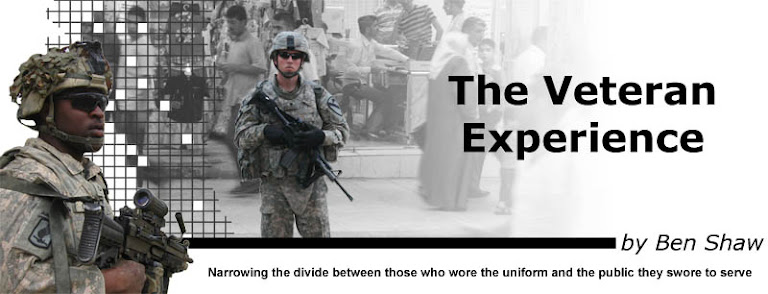“When they launched the trac [Marine Corps amphibious assault vehicle] off the back of our ship, the thing actually sunk and water started pouring in the driver’s open hatch. I have no idea why he didn’t close it. But after a moment it came back up, and we started circling in the water until all the other tracs were ready to push, too.”
Cole and his unit, as well as two other Marine Infantry battalions, were part of Operation Starlite; as General Westmoreland put it, the first hostile amphibious landing since the Korean War. It was also the first strictly US military offensive action of the Vietnam War. Intelligence reports estimated that they were attacking a Viet Cong estimated to be 2,000 strong, on the beach, with Naval gunfire sailing overhead, air support strafing the enemy lines, and under withering fire from the Viet Cong. “I was just a PFC [private first class], you know. It was ‘65 and I was only 19. I wasn’t scared, exactly. But I was thinking, ‘wow.’ That’s all that ran through my head most of the time. ‘Wow.’
“As we rode towards the beach, the trac driver still had his hatch open. We’d crest a wave, then ride into the trough and the next swell would wash over the trac. Every time, the driver would get swamped as we took on more water. He’d frantically smear his sleeve and hands across his face, fight with the steering controls, and keep on going. We were all crammed in the troop transport area so tightly that as we sat there, our knees were interlocked with the guys sitting in the row facing us. The water was so high in the back that it was soaking the seats of our pants. I figured we’d never make it to land.
“Right about the time that I’m thinking that archeologists are going to find our corpses and our trac at the bottom of the ocean 5,000 years from now, the treads touched sand and we went tearing up onto the beach.
“When we got up in the sand, the doors came open, all the water spilled out, then we came running out right after that. Under fire, of course.”
Cole’s position was on the far right extreme of Kilo Company’s inland push, bounding, taking cover, and bounding some more.
“To my right about 500 feet or so, Corporal O’Malley from India Company was winning the Medal of Honor for jumping into a VC trench and killing a bunch of ‘em – then he refused a medevac until all his squad was safely out of harm’s way. To my left, not 100 feet away, there were fierce firefights with other squads and platoons. Overhead, the jets strafed the VC positions and bass rained down through the canopy all around us. And you know what, running up that beach, stopping when they told us to, rushing forward when they yelled at us, I never fired a shot through my M-14. Not once. Our lane never had any gooks in it to shoot at. All around me, yes, but you couldn’t see through the canopy and foliage. That was their business in their lane. We just didn’t encounter anything in mine. We had to be careful, though. Most of the VC were underground, and as soon as we’d advance past their trap doors and tunnels, they’d pop us and shoot us from behind. I feel sorry for the bastards in India Company, though. They pushed right through the VC command post – and they got torn up too. Two actually were awarded the Medal of Honor in that company – and somehow lived to receive them.”
After three days of sporadic heavy fighting, attacks and counter attacks, reinforcements started to pour onto the beach. Supply convoys, however, were repeatedly ambushed as they pushed towards the front lines. Each time, Marines on the front lines further depleted their ranks and dispatched elements rearward to “rescue the rescuers” – taking heavy casualties along the way. Eventually, however, Marines from 3/7 were finally deployed to relieve the main elements of Cole’s battalion holding the front lines.
“They went forward all gung ho with their spit-shined boots and pressed cammies. Apparently they were clueless, though. Not an hour later or so, I was sitting there eating some food and resting, and Marines started walking by carrying ponchos all wrapped up. You could see clean, spit-shined boots sticking out the end. Those kids didn’t make it six hours in country.”
After completing his tour through Vietnam, Cole returned to the stateside Marine Corps and soon found himself among the first “Redeyes” of the military – a unit few are aware even existed.
“The Redeye is actually just the predecessor for the Stinger missile – a heat-seeking missile fired from a shoulder-mounted launcher. We were the first guys. Whenever we went out for a test shoot, all these Generals from the Pentagon would be there, the General Dynamics contractors that designed them, and even politicians. We always gave them a show.
“But the trouble was that all we did in that unit was conditioning humps [hikes]. We’d have to haul all our gear plus the 37 pound launcher everywhere. It’s all we ever did. When I saw that they were looking for dog handlers, I leaped at the opportunity. It looked interesting…”
To Be Continued…
Copyright © 2009, Ben Shaw All Rights Reserved
www.byshaw.com
www.byshaw.com/blog

1 comment:
Yep. You found another one. They are sprinkled throughout this country and in the most unlikely places. Good piece.
Post a Comment